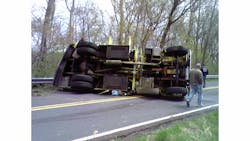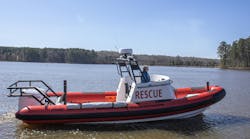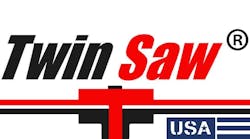In this installment, we look at the National Fire Protection Association (NFPA) line-of-duty-death statistics for 2013. Old news, you might say, as we are now in 2015, but there is a lengthy lag time because the information about these fatalities must be verified before it can be presented properly. The NFPA has done a really good job, and we thank its Fire Analysis and Research Group for this information.
As a former training officer, I find this information valuable for a couple of reasons. First, it is timely and generally accurate. Second, many of these case studies made excellent material to learn from others and from history. No one wants to see any of these tragedies repeated.
Why 17 firefighters died
In 2013, 17 firefighters died in vehicle-related incidents, including 10 firefighters who died in vehicle crashes. Six other firefighters were struck and killed by vehicles and one firefighter fell to his death when his parachute failed to open during a proficiency jump. There were no firefighter deaths in aircraft crashes in 2013.
Seven of the 10 firefighters who died in crashes were killed while responding to incidents and one was killed while returning from an incident. All eight were the drivers in single-fatality crashes. Three were responding to the scene of vehicle crashes, three were responding to structure fires, one was responding to a wildland fire and another was returning from a wildland fire:
• A firefighter responding to a wildland fire in his private vehicle was killed when his vehicle went off the road and struck a tree. The victim was wearing a seatbelt.
• A firefighter driving to a structure fire in a fire department SUV skidded on a wet curve, went off the road and struck a tree and fence. The victim was wearing his seatbelt and was not ejected. Driving too fast for conditions, which included limited visibility due to heavy rain, was cited as a cause of the crash.
• A firefighter responding in his personal vehicle to a structure fire lost control and his vehicle overturned. He was not wearing a seatbelt and was ejected. Speeding and drunken driving were factors in this crash.
• A firefighter driving a pumper to a structure fire was killed when the vehicle ran off the road, overturned and struck a utility pole. He was not wearing a seatbelt and was partially ejected. Water shifting in the tank on a curve was cited as a factor in the crash. There was no information on speed.
• A firefighter responding to a vehicle crash in his personal vehicle struck another emergency responder’s car as he attempted to overtake or pass the other vehicle while it was making a left turn. After striking the other vehicle, the victim’s vehicle went down a ditch, hit a culvert, went airborne, landed on the roof and rolled. The victim was not wearing a seatbelt and was ejected. Failure to yield the right of way and improper passing were cited as factors in the crash.
• Another firefighter responding to a vehicle accident in his own vehicle lost control in heavy rain, crossed the centerline sideways and was broadsided by an oncoming vehicle. He was wearing a seatbelt and was not ejected. Speeding was cited as a factor in the crash.
• A third firefighter responding to a motor vehicle crash in his personal vehicle lost control on a curve in the rain, overcorrected and ran off the road, striking a concrete structure. The victim was not wearing a seatbelt and was not ejected. Speeding was cited as a factor in the crash.
• The firefighter who died in a crash while returning from a wildland fire was driving a water tender (tanker) when he hit an embankment on a steep road and overturned. There were no other details on the crash.
In the other two crashes, a firefighter riding an ATV searching for the source of a reported fire apparently jumped or was thrown from the vehicle when it started to roll on a slope. The vehicle rolled over him, resulting in fatal injuries. In the other crash, a firefighter returning on his motorcycle from off-site training crossed the centerline on a curve and struck an oncoming vehicle. No other details were reported.
Six firefighters were struck and killed by vehicles. Four were working at the scenes of motor vehicle crashes and two were operating at fires:
• One firefighter was operating at a motor vehicle crash on an icy highway when a passing tractor-trailer lost control and struck him. Actions of the driver, the weather, inadequate protection of the highway work area and inadequate traffic management were cited as factors in the death.
• A drunken driver struck a firefighter while he was directing traffic at a crash scene on a highway.
• A firefighter was struck at a crash scene by a passing vehicle as he was putting on his personal protective equipment.
• A firefighter directing traffic 100 feet from a crash scene was struck from behind. He was wearing a safety vest.
• Smoke obscured visibility at the scene of a prescribed burn as a firefighter stepped out of his vehicle. He was struck by a passing vehicle. The victim was not wearing a high-visibility retro-reflective vest at the time and the travel lane was not protected.
• A firefighter was retrieving his gear from the back of his rescue vehicle at a fire scene when he became pinned against the vehicle by another apparatus that was backing up. Inattention, lack of situational awareness, vehicle placement and lack of a backer guiding the apparatus were cited as factors in the incident.
NFPA safety standards
NFPA publishes several standards related to road and vehicle safety issues and a new standard is currently being developed:
• NFPA 1002, Standard on Fire Apparatus Driver/Operator Professional Qualifications, identifies the minimum job performance requirements for firefighters who drive and operate fire apparatus in both emergency and nonemergency situations.
• NFPA 1451, Standard for a Fire Service Vehicle Operations Training Program, provides for the development of a written vehicle operations training program.
• NFPA 1911, Standard for the Inspection, Testing, Maintenance and Retirement of In-Service Automotive Fire Apparatus, details a program to ensure that fire apparatus are serviced and maintained.
• NFPA 1901, Standard for Automotive Fire Apparatus, addresses vehicle stability to prevent rollovers and gives manufacturers options on how to provide it.
• NFPA 1906, Standard for Wildland Fire Apparatus, establishes minimum design, performance and testing requirements for new vehicles over the 10,000-pound gross vehicle weight rating that are specifically designed for wildland fire suppression.
• NFPA 1091, Standard on Traffic Control Incident Management, currently under development, will identify the minimum job performance requirements necessary to perform temporary traffic control duties at emergency incidents on or near an active roadway. Its first edition will be published in 2015, and a proposed draft is available on NFPA’s website for review.
In addition, provisions of NFPA 1500, Standard on Fire Department Occupational Safety and Health Program, include requirements that operators successfully complete an approved driver training program, possess a valid driver’s license for the class of vehicle and operate the vehicle in compliance with applicable traffic laws. Passengers must remain seated and must not release or loosen their seatbelts for any reason while the vehicle is in motion.
In related efforts, the USFA has formed partnerships with the International Association of Fire Fighters (IAFF), National Volunteer Fire Council (NVFC) and International Association of Fire Chiefs (IAFC) to focus attention on safety while responding in emergency apparatus. Details can be found at http://www.usfa.fema.gov/fireservice/firefighter_health_safety/safety/vehicle_safety/index.shtm.
The focus of vehicle safety programs should not be exclusively on fire department apparatus. Over the years, private vehicles have been those most frequently involved in crashes. Under NFPA 1500, if members are authorized to respond to incidents or to fire stations in private vehicles, the fire department must establish specific rules, regulations and procedures relating to the operation of private vehicles in an emergency mode. NFPA 1451 also requires training for those using privately owned vehicles.
Requirements are also in effect for emergency personnel operating on roadways. The 2009 version of the Federal Highway Administration’s Manual of Uniform Traffic Control Devices (MUTCD) requires anyone working on a roadway to wear an ANSI 107-compliant high-visibility vest. An exemption was created for firefighters and others engaged on roadways that allows them to wear NFPA-compliant turnout gear when directly exposed to flames, heat and hazardous material. NFPA 1500 requires firefighters working on traffic assignments where they are endangered by motor vehicle traffic to wear clothing with fluorescent and retro-reflective material and use fire apparatus in a blocking position to protect firefighters.
As we have seen, we have not found new ways to kill firefighters during emergency vehicle operations. So what can you do? Learn from these tragedies and train to prevent them. In addition to the information in these columns and NFPA standards, additional resources include Firehouse.com, emergencyvehicleresponse.com, firefighterclosecalls.com, respondersafety.com, National Institute for Occupational Safety and Health (NIOSH) firefighter fatality reports and the U.S. Fire Administration research.
Michael Wilbur presents “What Have We Learned?” at Firehouse World 2015.
MICHAEL WILBUR, a Firehouse® contributing editor, recently retired as a lieutenant in the New York City Fire Department, where he was last assigned to Ladder Company 27 in the Bronx. He has served on the FDNY Apparatus Purchasing Committee and consults on a variety of apparatus-related issues around the country. For further information, access his website at www.emergencyvehicleresponse.com.
Connect with Mike
Facebook: LINK TO COME
Twitter: LINK TO COME
LinkedIn: LINK TO COME






